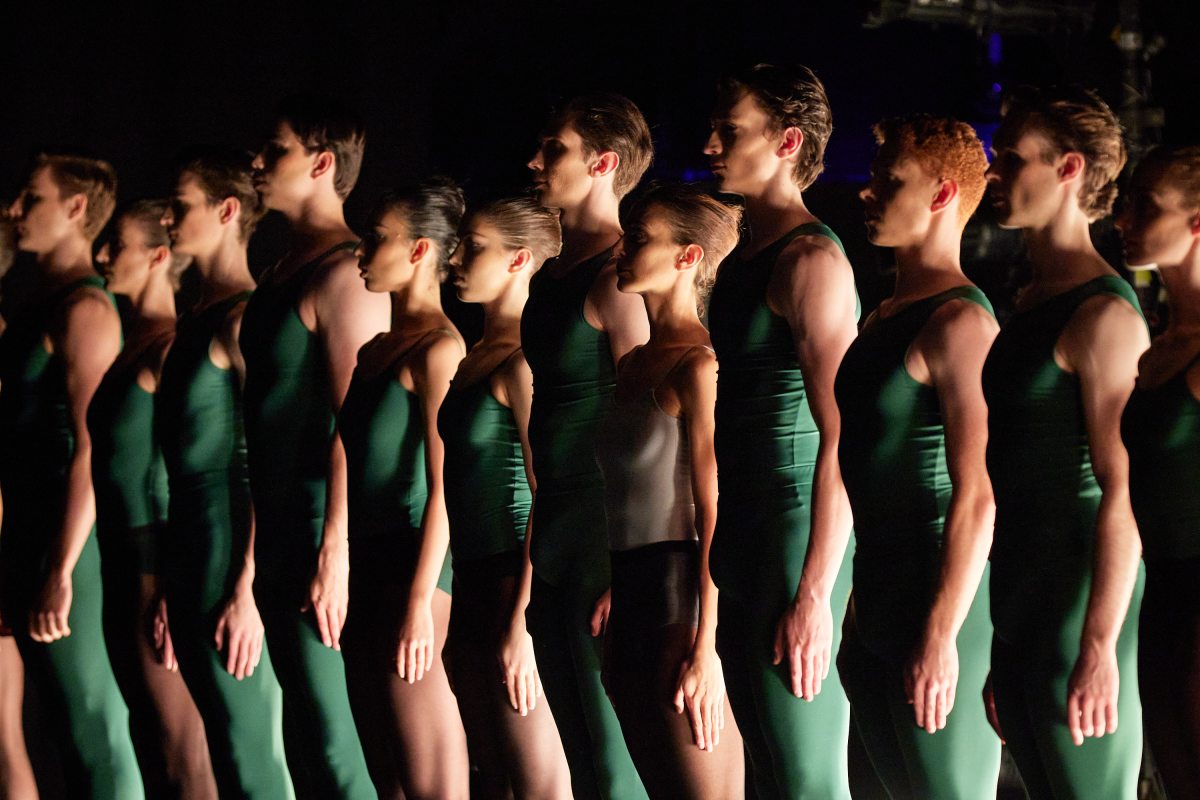In Counterpointe, The Australian Ballet’s Artistic Director David Hallberg aims to lead the audience on a historical journey, from the spectacle of 19th century classical ballet to the innovations of contemporary dance. This project challenges both the dancers – showcasing their range, stamina, and technical skill – and the audience, who are given the chance to re-examine their ideas about the purpose and potential of ballet as an artform.
Counterpointe opens with Act III of the 1898 ballet Raymonda. This is classical ballet with all the traditional trimmings: ornate drapery and lighting, stiffened tutus in sumptuous cream and gold, and full orchestral accompaniment. Choreographed by Marius Petipa (renowned for his collaborations with Tschaikovsky for productions such as The Nutcracker), the final act of Raymonda is a jubilant wedding celebration for the titular heroine and her crusader husband. Eight couples perform spirited, Hungarian-inspired dances, before Sharni Spencer captivates the audience with a poised and precise rendition of Raymonda’s iconic hand-clapping solo.
Bisecting the two longer works is a performance of George Balanchine’s 1960 Tschaikovsky Pas de Deux: a short routine set to a previously forgotten Tschaikovsky piece originally composed for Swan Lake. Stripped of set and storyline, the dance is a moment of playful joy between a girl and boy.
Yuumi Yamada and Brett Chynoweth, diaphanously attired, are agile and light-footed as they circle each other against a simple backdrop that is the deep blue of a summer sky. This impression of floating effortlessly in mid-air is all the more remarkable given the strenuous leaps and dives that are required in this fleeting yet memorable piece.
To close the evening, 35 dancers return to the stage for William Forsythe’s Artifact Suite. Adapted from Forsythe’s full-length 1984 ballet, Artifact, it is a thrilling and ambitious contemporary work. Watching the entire corps de ballet move together is mesmerising. In their sleek green costumes, the dancers could be a company of toy soldiers as they rearrange themselves into new formations with clockwork precision.
But Forsythe, an admirer of Balanchine, also imbues the dance with freshness, speed, and an organic vitality: doing away with the rigidity of classical ballet to embrace exaggerated shapes and off-centre positioning. In a satisfying echo of the Raymonda solo, the choreography includes frequent clapping sounds, which here emphasise the bodily power of the group.
The theme of ‘counterpoint’ is evident on several levels: the counterpoint melodies in the music, what Forsythe calls the “visual counterpoint” of moments such as his double pas de deux, and, of course, the overall juxtaposition of classical and contemporary styles.
Read: Book review: Of Marsupials and Men, Alistair Paton
A show such as this one reminds us that ballet is an ever-evolving art with a history of creative innovators. It is fascinating to be given a sense of the historical context of each piece, and a joy to discover that all three still have the power to surprise and move us today.
Counterpointe
The Australian Ballet
With the Adelaide Symphony Orchestra
His Majesty’s Theatre, Adelaide
Counterpointe will be performed until 13 July 2022





